| |
|
|
|
|
English Family Quick Links
|
|
|
|

|
|
|
|
|
Family 1: Tregonwell's Natural Barb Mare
 |
VIEW DESCENT CHART
Still the most populous female family, with a 2010 Epsom Oaks winner, the fortieth tracing to its founding mares since the race was first established in 1779. Some of the most renowned mares in the history of the thoroughbred, and many of its most influential stallions, are members of Family 1. Those two great pillars of the studbook, the Epsom Derby-winning brothers Whalebone and Whisker rose from this family, as did the golden chestnut Bend Or, and his great-great grandson, Phalaris, to whom a large percent of the breed today trace in tail-male descent. The important eighteenth century progenitor, Snap, was a son of this family.
|
Family 1 Overview
[Tregonwell's/Lonsdale's] Natural Barb Mare (f) [1]
Mare (f) by Restive
| Mare (f) by Commoner
| Mare (f) by Bay Bolton
| [Maskell's] Bumper (c, 1735) by (Old) Partner
[Pulleine's] Rockwood (c) by Place's White Turk
Mare (f) by Place's White Turk
Taffolet Barb Mare (f) by Taffolet Barb
Byerley Turk Mare (f) by Byerley Turk
Grey Ramsden (c, 1704) by Hautboy
Mare (f) by Spanker or Young Spanker
| Mare (f) by [Curwen's] Spot
| Mare (f) by Lexington Grey Arabian
| [Bolton] Fearnought (c, 1725) by Bay Bolton
| Brother to Fearnought (c, 17--) by Bay Bolton
Newcastle Turk mare (f) by Newcastle Turk
| Morat (c, 1724) by Bay Bolton(1705)
| Gipsy (f,1725) by Bay Bolton(1705)
| | Slipby (c, 1734) by Fox
| | Mare (f, 1738) by Fox
| | | [Cumberland's] Crab (c,1744) by (Old) Crab
| | | Brown Betty (f,1747) by Regulus
| | | (Old) Snap (c,1750) by Snip (1736)
| | | Mare (f,1751) by (Old) Crab
| | | | Mare (f) by Alcides
| | | | Monimia (f, 1771) by Matchem (1748)
| | | | Grey Highflyer (f, 1782) by Highflyer
| | | | Hambletonian (c,1792) by King Fergus (1775)
| | | Mare (f, 1753) by Starling
| | | | Mare (f,1761-2) by Regulus (1739)
| | | | Mare (f) by Turf
| | | | Messenger (c,1780) by Mambrino (1768)
| | | Northumberland (c,1754) by Cade
| | | Legacy (f, 1762) by Young Snip
| | | Tom Tug (c, 1777) by Herod
| | Mare (f, 1739) by Fox
| | Why Not (c, 1744) by Crab
| Mare (f) by Tifter
Darley Arabian Mare(f) by Darley Arabian(1700)
Mare (f, 17--) by Bay Bolton
| Mare (f, 1736) by Lonsdale Bay Arabian
| | Miss Ramsden (f, 17--) by Cade
| | Woodpecker (c, 1773) by Herod
| | Whipchord (c, 1776) by Herod
| Alfred (c, 1749) by Sedbury
BONNY LASS (f,1723) by Bay Bolton(1705) [1-a]
Partner Mare(f,1735) by Partner(1718)
| Naylor (f,1748) by Cade(1734)
| | Mare (f,17--) by Blank(1740)
| | Firetail(f,1772) by Eclipse(1764)
| | Abigail (f,1788) by Woodpecker(1773)
| Julia (f,1756) by Blank(1740)
| PROMISE (f,1768) by Snap(1750) [1-d]
| | Peppermint (f,1787) by Highflyer(1774)
| | | Trumpator Mare(f,1797) by Trumpator(1782)
| | | |Penelope (f,1807) by Swordsman (1796)
| | | |nbsp;|Mare(f,1820) by Waxy Pope(1806)
| | | |Medora (f,1813) by Swordsman (1796)
| | | | Fib (f,1821) by Bobadil (1813)
| | | | Rockingham (c,1830) by Humphrey Clinker
| | | Zephyr (f,1805) by Coriander(1786)
| | | Loyalty (f,1817) by Rubens (1805)
| | | Fanny Kemble (f,1827) by Paulowitz (1813)
| | PRUNELLA (f,1788) by Highflyer(1774) [1-e]
| | PENELOPE (f,1798) by Trumpator [1-o]
| | | Whalebone(c,1807) by Waxy(1790)
| | | WEB (f,1808) by Waxy(1790) [1-s]
| | | | Filagree(f,1815) by Soothsayer(1808)
| | | | | Phantom Mare(f,1820) by Phantom(1808)
| | | | | | Odessa(f,1833) by Sultan(1816)
| | | | | | |Flax(f,1855) by Surplice(1845)
| | | | | | | QUEEN BERTHA (f,1860) by Kingston [1-w]
| | | | | | Mare(f,1839) by Langar(1817)
| | | | | | Varsoviana (f,1852) by Ion (1835)
| | | | | | Nemesis (f,1858) by Newminster (1848)
| | | | | Cobweb(f,1821) by Phantom(1808)
| | | | | | Bay Middleton(c,1833) by Sultan(1816)
| | | | | | Clementina (f,1844) by Venison(1833)
| | | | | Charlotte West (f, 1827) by Tramp
| | | | | Riddlesworth (c, 1828) by Emilius
| | | | | Joanna(f,1803) by Sultan(1816)
| | | | | Joannina(f,1835) by Priam(1827)
| | | | | The Cossack(c,1844) by Hetman Platoff(1836)
| | | | Middleton(c,1822) by Phantom(1808)
| | | | TRAMPOLINE (f,1825) by Tramp(1810) [1-t]
| | | | Glencoe(c,1831) by Sultan(1816)
| | | | Glencairne(f,1838) by Sultan(1816)
| | | | Glengowrie (f,1851) by Touchstone(1831)
| | | | MAID OF THE GLEN (f,1858) by Kingston [1-u]
| | | Woful(c,1809) by Waxy(1790)
| | | Wilful(f,1810) by Waxy(1790)
| | | Wire(f,1811) by Waxy(1790)
| | | | Valve (f, 1820) by Bob Booty
| | | || Pussy (f, 1831) by Pollio
| | | | Vamp(f,1825) by Langar(1817)
| | | | | St. Mary's(f,1844) by Hamlet
| | | | | Dixie(f,1859) by Sovereign(1836)
| | | | Vat(f,1826) by Langar(1817)
| | | | | Vexation (f,1845) by Touchstone(1831)
| | | | Vinegar(f,1832) by Picton(1819)
| | | | Mustard (f,1836) by Philip I (1828)
| | | | Clarinda(f,1846) by Sir Hercules(1826)
| | | | Nightingale(f,1857) by Mountain Deer(1848)
| | | | HILARITY (f,1871) by King Tom [1-p]
| | | Whisker(c,1812) by Waxy(1790)
| | | Whizgig (f, 1819) by Rubens
| | | | Oxygen (f, 1828) by Emilius
| | | Waltz(f,1822) by Election(1804)
| | | Morisca(f,1826) by Morisco
| | | Zillah(f,1835) by Reveller(1815)
| | | THE PRAIRIE BIRD (f,1844) by Touchstone [1-r]
| | Parasol(f,1800) by Pot 8o's(1773)
| | | Partisan(c,1811) by Walton(1799)
| | Waxy Pope(c,1806) by Waxy(1790)
| | Pledge(f,1807) by Waxy(1790)
| | | Tiresias(c,1816) by Soothsayer(1808)
| | PAWN (f,1808) by Trumpator (1782)[1-f]
| | | Pawn Junior(f,1817) by Waxy(1790)
| | | | Delhi(f,1838) by Plenipotentiary(1831)
| | | | ELLEN HORNE (f,1844) by Redshank(1833) [1-j]
| | | | Paradigm (f,1852) by Paragone(1843)
| | | | | Lord Lyon(c,1863) by Stockwell(1849)
| | | | | Chevisaunce(f,1868) by Stockwell(1849)
| | | | | PARAFFIN (f,1870) by Blair Athol(1861) [1-l]
| | | | | FOOTLIGHT (f,1876) by Cremorne [1-m]
| | | | | | Glare(f,1891) by Ayrshire(1885)
| | | | | | Serpentine(f,1893) by St. Serf(1887)
| | | | | Illuminata(f,1877) by Rosicrucian(1865)
| | | | | Phosfine(f,1885) by Foxhall(1878)
| | | | | Vauxhall(f,1888) by Foxhall(1878)
| | | | | Ladas(c,1891) by Hampton(1872)
| | | | | Gas(f,1892) by Ayrshire(1885)
| | | | | CHELANDRY (f,1894) by Goldfinch [1-n]
| | | | ROUGE ROSE (f,1865) by Thormanby [1-k]
| | | PROBLEM (f,1823) by Merlin(1815) [1-g]
| | | Nameless(f,1831) by Emilius(1820)
| | | | Mystery(f,1842) by Jerry(1821)
| | | | Secret(f,1853) by Melbourne(1834)
| | | | Lady Audley (f,1867) by Macaroni(1860)
| | | | Pilgrimage (f,1875) by The Palmer(1864)
| | | Io (f,1836) by Taurus
| | | Sunflower (f,1847) by Bay Middleton(1833)
| | | | Sunbeam (f,1855) by Chanticleer(1843)
| | | | | SUNSHINE (f,1867) by Thormanby [1-h]
| | | | | SUNRAY (f,1874) by King of the Forest [1-i]
| | | | | Sundown (f,1887) by Springfield(1873)
| | | | Chieftain's Daughter (f,1959) by Lord of the Isles
| | | | Mayflower (f,1864) by Thormanby
| | | | Crocus (f,1866) by Thormanby(1857)
| | | Flora McIvor(f,1856) by New Warrior (1851)
| | Prudence (f,1811) by Waxy(1790)
| Princess(f,1769) by Herod(1758)
| Puzzle(f,1778) by Matchem(1748)
| Woodbine (f, 1791) by Woodpecker
| | Music (f, 1810) by Waxy
| | Minuet (f, 1812) by Waxy
| Hornby Lass(f,1796) by Buzzard(1787)
| MOREL (f,1805) by Sorcerer (1796) [1-b]
| Andrew(c,1816) by Orville(1799)
| MUSTARD (f,1824) by Merlin(1815) [1-c]
| | Preserve(f,1832) by Emilius(1820)
| | Mangosteen(f,1844) by Emilius(1820)
| Mare (f,1826) by Sam(1815)
Mare (f,1736) by Lonsdale Bay Arabian(17--)
Mare (f,17--) by Regulus (1739)
| Mare(f,17--) by Blank
| | Goldfinder (c,1764) by Snap
| | Mare (f,1767) by Squirrel
| | Flyer (f,1777) by Sweetbriar (1769)
| | | Rhadamanthus (c,1787) by Justice (1774)
| | | Daedalus (c,1791) by Justice (1774)
| | | Mare (c,1794) byPot-8-Os (1773)
| | Ceres (f,1779) by Sweet William (1769)
| Nettle (f,1763) by Bajazet
| Nettletop (f,1770) by Squirrel
| Mare (f,1777) by Herod
| Augusta (f,1784) by Eclipse
| Eliza (f,1791) by Highflyer
| Scud (c,1804) by Beningbrough
Bonny Lass (f,1751) by Black Chance
Mare (f,175-) by Janus
Y. Bonny Lass (f,176-) by Jolly Roger
| |
Of the many Family 1 mares of significance to the breed, the most important is Julia (1756, by Blank), with four generations of high-class race mares and broodmares -- many of them taproots of various branches of the family -- descended from her in the Duke of Grafton's stud. The dual-classic winner Pilgrimage (1875), later dam of a Derby winner and two important stallion sons, and of Canterbury Pilgrim, herself a classic winner and dam of two significant sons -- Chaucer and multiple leading sire Swynford -- is a daughter of this family. Another classic winner in the family, Queen Bertha (1860) bred two classic-winning daughters that were themselves significant producers. La Troienne (1926), in addition to producing the American classic winner Bimelech, champion Black Helen, and nine other winners, sent her line forward to the present through many good daughters. These are just a few of the outstanding mares, all descending from Julia, that have contributed to the success of the family.
Tregonwell's Natural Barb Mare was apparently owned originally by Mr. Tregonwell of Dorset,
in southern England (maternal grandfather of the famous "Keeper of the King's Running Horses" Tregonwell Frampton). The term "natural" was often applied to a horse foaled in England from oriental, usually imported, parents. J.B. Robertson ["The Origin of the Thoroughbred" in Flat Racing, Londsdale Library, Vol. XXVIII (London: Lippincott Co.)] thought it possible, "if unlikely," that she was a daughter of Tregonwell's famous race mare, Snorting Bess, and by the Shaftesbury Turk.
Records show she had at least three foals, a filly by Place's White Turk, a filly by Restive, and a colt named Rockwood, sire not stated in the GSB [Pick's Turf Register makes him a son of Place's White Turk]. There are no firm dates to establish her year of birth, but it has been reported that she was alive during the reign of Charles II (1660-1685). Place's White Turk was imported c.1657, so somewhere between 1657 and 1670 would be a good estimate for her lifespan.
She is mentioned in the General Stud Book (GSB) in the entry for her great-granddaughter, a Byerley Turk mare who was "bred by Sir W. Ramsden, her dam by the Taffolet or Morocco Barb, grandam by Place's White Turk-Natural Barb Mare of Mr. Tregonwells." This Byerley Turk mare produced four foals: the colt Grey Ramsden (gr. 1704 by Grey Hautboy), and three fillies, one by Spanker, one by the Darley Arabian, and one by the Newcastle Turk. All three daughters went on as producers, but the one by the Darley Arabian was the one to establish the line that extends to the present.
The Tregonwell Natural Barb Mare also makes two other appearances in the GSB [also in Pick's Turf Register], under the ownership of Sir John Lowther, (1st) Viscount Lonsdale. In the entry for Mr. Maskell's Bumper (1735 by (Old) Partner), his dam was by Bay Bolton, second dam by (Old) Commoner, third dam by Restive,
and fourth dam noted as "Lord Lonsdale's Tregonwell Barb mare." The other mention of her is in the entry for Rockwood, he was identified as "Pulleine's, out of the Lonsdale Tregonwell Barb Mare."
Lord Lonsdale owned the famous Lowther Stud, in Westmoreland in northern England. Sir William Ramsden, a wealthy Hull merchant and breeder of the Byerley Turk mare, was his son-in-law, and it's likely that Ramsden would have had access to a daughter or granddaughter of this important early matriarch to join his stud at Ferrybridge, Yorkshire. Both Lonsdale's and Ramsden's (both Sir William and his son Sir John, an M.P. for Hull) names are associated with several early horses in this family, including Bonny Lass (1723, taproot of Branch 1-A), who was bred by Sir William Ramsden, and from which most of the family descends.
As far as possible corrections to this family, based on the Hill MtDNA study, nine contemporary horses from the family were examined, and all but one had an identical MtDNA sequence. The outlier traced to the line descending from Maid of the Glen (Branch 1-U), a granddaughter of Glencoe's sister, Glencairne. Somewhere along this line, a mare was erroneously recorded in the GSB as belonging to Family 1, when in fact she shared the same matriline as the horses descending from the Family 16 founder. Part, or all of Maid of the Glen's descendants are not members of Family 1.
In an odd twist, it turned out that of the four horses tested in Family 16, one horse proved to share the same matriline as the eight horses of Family 1. This horse traced to Lady Alice (1855, by Chanticleer), a daughter of Miss Agnes, of the famous Agnes family of Family 16. Some, or all, of Lady Alice's descendants are actually part of Family 1. It is possible the mix-up occured in the stud of Richard Sutton, Jr., where Maid of the Glen, and most of her siblings, were bred, and where Lady Alice also resided, but, as with all of the returns from the Hill mtDNA study, testing of more descendants in both families is necessary to clarify the results.
Since the Hill study only looked at nine horses associated with this vast and widespread family, it's likely there are more anomalies and confused matrilines yet to be identified.
One other historical issue should be addressed. The identity of Bonny Lass (1751, by Black Chance) is uncertain. This Virginia-based mare, founder of one of the oldest surviving families from that state, had important progeny in the U.S., including Upshaw's Tristram Shandy (c. 1762), a noted quarter horse in Virginia, and daughters that bred on, extending into the late nineteenth century with Kenner Stakes winner Baron Pepper and Jerome Handicap winner King Barleycorn, out of Pierre Lorillard's Rancocas Stud, among her descendants. The female line continued to Grave and Gay (1899, by Henry of Navarre), who was taken to England to race by August Belmont; in 1907 she was purchased by the Weinberg brothers of Germany, and at their Gestut Waldfried was a superior broodmare, dam of the stallionGraf Ferry, Deutsches St. Leger winner Ganelon, and ancestress of many stakes winners.
|
Fairfax Harrison, in his Early American Turf Stock (Vol. I), untangles the history of her erroneous placement as a daughter of the (Ancaster) Blank out of the (Ancaster) Bonny Lass (Family 11). Examining all the evidence -- including the certainty she was not from the (Ancaster) Bonny Lass -- Harrison came to the conclusion that this famous Virginia mare was most likely (but not certainly) to be the Bonny Lass by Black Chance, which makes her and her descendants part of Family 1-A.
|
|
|
FAMILY #1 NOTABLE DESCENDANTS
|
|
Family #1 Oaks Winners
|
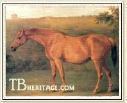 | 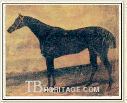 |
| Morel | Minuet |
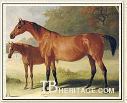 | 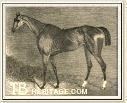 |
| Cobweb | Turquoise |
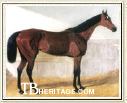 | 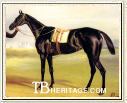 |
| Oxygen | Pussy |
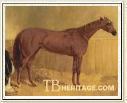 | 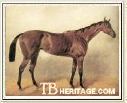 |
| The Princess | Queen Bertha |
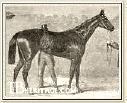 | 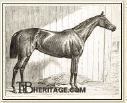 |
| Spinaway | Jannette |
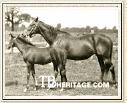 | 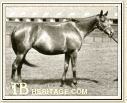 |
| Wheel of Fortune | Busybody |
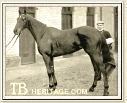 | 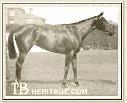 |
| Canterbury Pilgrim | Cap and Bells |
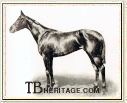 | 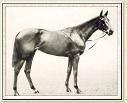 |
| Cherimoya | Jest |
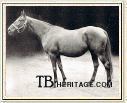 | 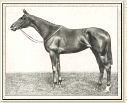 |
| Charlebelle | Pogrom |
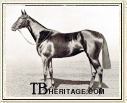 | 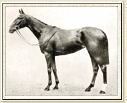 |
| Brownhylda | Saucy Sue |
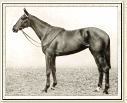 | 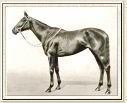 |
| Short Story | Beam |
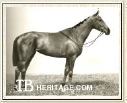 | 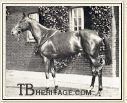 |
| Pennycomequick | Brulette |
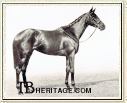 | 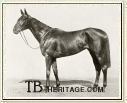 |
| Light Brocade | Galatea |
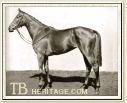 | 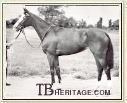 |
| Musidora | Ambiguity |
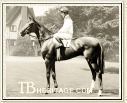 | 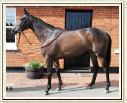 |
| Altesse Royale | Snow Fairy |
|
| 1782 CERES b.f. 1779 [1-A]
(Sweet William - Mare by Squirrel)
|
| 1804 PELISSE br.f. 1801 [1-E]
(Whiskey - Prunella) |
| 1808 MOREL ch.f. 1805 [1-B]
(Sorcerer - Hornby Lass) |
| 1813 MUSIC b.f. 1810 [1-A]
(Waxy - Woodbine) |
| 1815 MINUET b.f. 1812 [1-A]
(Waxy - Woodbine) |
| 1822 PASTILLE b.f. 1819 [1-E]
(Rubens - Parasol) |
| 1824 COBWEB b.f. 1821 [1-S]
(Phantom - Filagree)
|
| 1828 TURQUOISE br.f. 1825 [1-E]
(Selim - Pope Joan) |
| 1831 OXYGEN b.f. 1828 [1-O]
(Emilius - Whizgig) |
| 1834 PUSSY br.f. 1831 [1-O]
(Pollio - Valve) |
| 1844 THE PRINCESS ch.f. 1841 [1-S]
(Slane - sister to Cobweb) |
| 1863 QUEEN BERTHA b.f. 1860 [1-W]
(Kingston - Flax) |
| 1875 SPINAWAY b.f. 1872 [1-W]
(Macaroni - Queen Bertha)
|
| 1878 JANNETTE b.f. 1875 [1-J]
(Lord Clifden - Chevisaunce) |
| 1879 WHEEL OF FORTUNE b.f. 1876 [1-W]
(Adventurer - Queen Bertha) |
| 1884 BUSYBODY b.f. 1881 [1-W]
(Petrarch - Spinaway) |
| 1896 CANTERBURY PILGRIM ch.f. 1893 [1-G]
(Tristan - Pilgrimage)
|
| 1901 CAP AND BELLS b.f. 1898 [1-S]
(Domino - Ben-My-Chree)
|
| 1911 CHERIMOYA b/br.f. 1908 [1-T]
(Cherry Tree - Svelte)
|
| 1913 JEST ch.f. 1910 [1-S]
(Sundridge - Absurdity)
|
| 1920 CHARLEBELLE bl.f. 1917 [1-O]
(Charles O'Malley - Bushey Belle)
|
| 1922 POGROM b.f. 1919 [1-N]
(Lemberg - Popingaol)
|
| 1923 BROWNHYLDA b.f. 1920 [1-C]
(Stedfast - Valkyrie)
|
| 1925 SAUCY SUE b.f. 1922 [1-N]
(Swynford - Good and Gay)
|
| 1926 SHORT STORY b.f. 1923 [1-P]
(Buchan - Long Suit)
|
| 1927 BEAM b.f. 1924 [1-L]
(Galloper Light - Mistrella)
|
|
| 1929 PENNYCOMEQUICK br.f. 1926 [1-P]
(Hurry On - Plymstock)
|
| 1931 BRULETTE b.f. 1928 [1-D]
(Bruleur - Seaweed)
|
|
| 1934 LIGHT BROCADE br.f. 1931 [1-L]
(Galloper Light - Trilogy)
|
| 1939 GALATEA br.f. 1936 [1-N]
(Dark Legend - Galady)
|
|
| 1949 MUSIDORA b.f. 1946 [1-M]
(Nasrullah - Painted Vale)
|
| 1953 AMBIGUITY b.f. 1950 [1-P]
(Big Game - Amber Flash)
|
|
| 1970 LUPE b.f. 1967 [1-K]
(Primera - Alcoa)
|
| 1971 ALTESSE ROYALE ch.f. 1968 [1-W]
(Saint Crespin - Bleu Azur)
|
| 1983 SUN PRINCESS b.f. 1980 [1-L]
(English Prince - Sunny Valley)
|
|
| 1984 CIRCUS PLUME b.f. 1981 [1-K]
(High Top - Golden Fez)
|
| 1988 DIMINUENDO ch.f. 1985 [1-D]
(Diesis - Cacti)
|
| 1992 USER FRIENDLY dk.b. f. 1989 [1-S]
(Slip Anchor - Rostova)
|
| 1995 MOONSHELL b.f. 1992 [1-S]
(Sadler's Wells - Moon Cactus)
|
| 2010 SNOW FAIRY b.f. 2007 [1-K]
(Intikhab - Woodland Dream)
|
| 2011 DANCING RAIN ch.f. 2008 [1-T]
(Danehill Dancer - Rain Flower)
| | |
|
|
Family #1 St. Leger Winners
|
|
|
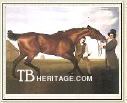 | 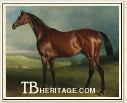 |
| Hambletonian | Rockingham |
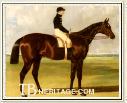 | 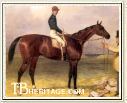 |
| Mango | Lord Lyon |
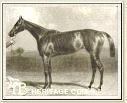 | 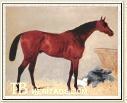 |
| Achievement | Hawthornden |
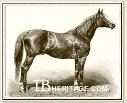 | 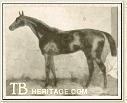 |
| Craig Millar | Silvio |
 | 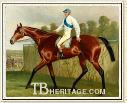 |
| Jannette | Robert the Devil |
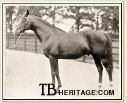 | 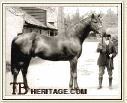 |
| The Lambkin | Swynford |
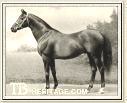 | 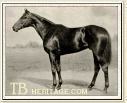 |
| Prince Palatine | Black Jester |
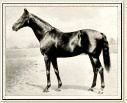 | 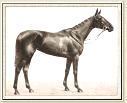 |
| Gay Crusader | Book Law |
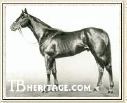 | 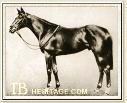 |
| Firdaussi | Never Say Die |
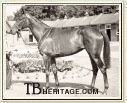 | 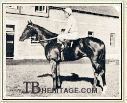 |
| Cantelo | Provoke |
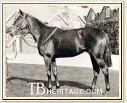 | 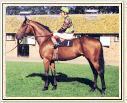 |
| Sodium | Bustino |
|
| 1795 HAMBLETONIAN b. c. 1792 [1]
(King Fergus - Grey Highflyer)
|
| 1833 ROCKINGHAM b.c. 1830 [1-D]
(Humphrey Clinker - Medora) |
| 1837 MANGO br.c. 1834 [1-C]
(Emilius - Mustard) |
| 1858 SUNBEAM b.f. 1855 [1-G]
(Chanticleer - Sunflower) |
| 1866 LORD LYON b.c. 1863 [1-J]
(Stockwell - Paradigm) |
| 1867 ACHIEVEMENT br.f. 1864 [1-J]
(Stockwell - Paradigm) |
| 1870 HAWTHORNDEN b.c. 1867 [1-R]
(Lord Clifden - Bonny Blink) |
| 1875 CRAIG MILLAR ch.c. 1872 [1-C]
(Blair Athol - Miss Roland)
|
| 1877 SILVIO b.c. 1874 [1-R]
(Blair Athol - Silverhair) |
| 1878 JANNETTE b.f. 1875 [1-J]
(Lord Clifden - Chevisaunce) |
| 1880 ROBERT THE DEVIL b.c. 1877 [1-A]
(Bertram - Cast Off) |
| 1884 THE LAMBKIN b.c. 1881 [1-R]
(Camballo - Mint Sauce)
|
| 1910 SWYNFORD br.c. 1907 [1-G]
(John O'Gaunt - Canterbury Pilgrim)
|
| 1911 PRINCE PALATINE b.c. 1908 [1-M]
(Persimmon - Lady Lightfoot) |
| 1914 BLACK JESTER br.c. 1911 [1-S]
(Polymelus - Absurdity) |
| 1917 GAY CRUSADER b.c. 1914 [1-G]
(Bayardo - Gay Laura) |
| 1927 BOOK LAW b.f. 1924 [1-N]
(Buchan - Popingaol) |
| 1932 FIRDAUSSI ch.c. 1929 [1-C]
(Pharos - Brownhylda)
|
| 1954 NEVER SAY DIE ch.c. 1951 [1-N]
(Nasrullah - Singing Grass)
|
| 1959 CANTELO b.f. 1956 [1-M]
(Chanteur - Rustic Bridge)
|
| 1965 PROVOKE b.c. 1962 [1-N]
(Aureole - Tantalizer)
|
| 1966 SODIUM b.c. 1963 [1-P]
(Psidium - Gambade)
|
| 1972 BOUCHER ch.c. 1969 [1-S]
(Ribot - Glamour)
|
| 1974 BUSTINO b.c. 1971 [1-W]
(Busted - Ship Yard)
|
| 1980 LIGHT CAVALRY b.c. 1977 [1-S]
(Brigadier Gerard - Glass Slipper)
|
| 1983 SUN PRINCESS b.f. 1980 [1-L]
(English Prince - Sunny Valley)
|
| 1990 SNURGE ch.c. 1987 [1-M]
(Ela-Mana-Mou - Finlandia)
|
| 1992 USER FRIENDLY b.f. 1989 [1-S]
(Slip Anchor - Rostova)
|
| 1993 BOB'S RETURN br.c. 1990 [1-W]
(Bob Back - Quality of Life)
|
| 1994 MOONAX ch.c. 1991 [1-W]
(Caerleon - Moonsilk)
|
| 2000 MILLENARY b.c. 1997 [1-L]
(Rainbow Quest - Ballerina)
|
|
|
Family #1 Other Notable Family Members
|
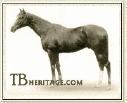 | | Absurd |
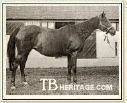 | | Absurdity - see Absurd |
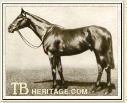 | | Alycidon |
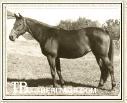 | | Baby League - see Busher |
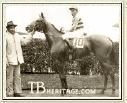 | | Bee Ann Mac - see La Troienne |
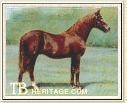 | | Bend Or |
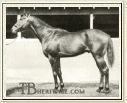 | | Bimelech - see La Troienne |
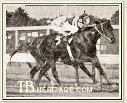 | | Bold Reasoning |
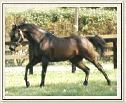 | Buckpasser
Courtesy Dell Hancock
Claiborne Farm
|
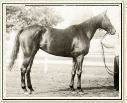 | | Busanda - see Buckpasser |
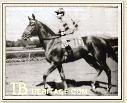 | | Busher |
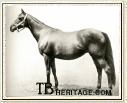 | | Chelandry |
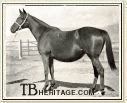 | | Chersonese - see Heroic |
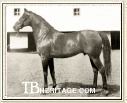 | | Congreve |
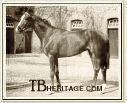 | | Court Martial |
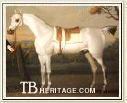 | | Cumberland's Crab - see Snap |
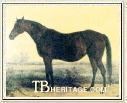 | | Dixie |
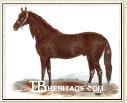 | | Dollar |
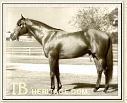 | | Dr. Fager |
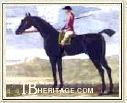 | | Fearnought |
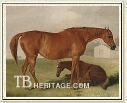 | | Filagree |
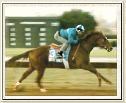 | Forty-Niner
Courtesy Dell Hancock
Claiborne Farm
|
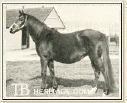 | | Gas - see Ladas |
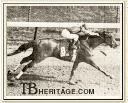 | | Genuine Risk |
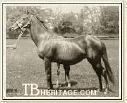 | | Glare |
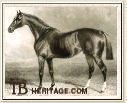 | | Glencoe |
| Hannibal |
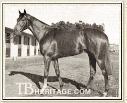 | | Hawaii |
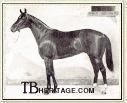 | | Heroic |
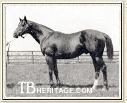 | | High Time |
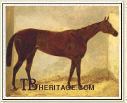 | | Jouvence |
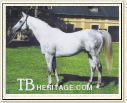 | | Kenmare |
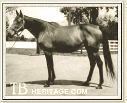 | | La Troienne |
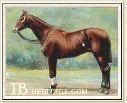 | | Ladas |
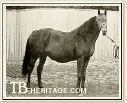 | | Lady Lightfoot - see Glare |
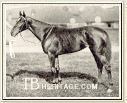 | | Lesbia - see Glare |
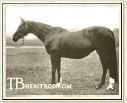 | | Maid of the Mint - see Minting |
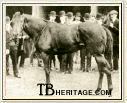 | | Martian |
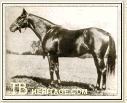 | | Meddler |
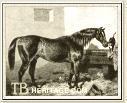 | | Melbourne |
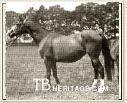 | | Mint Sauce - see Minting |
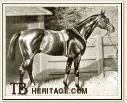 | | Minting |
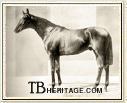 | | Mon Talisman |
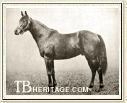 | | Morvich - see Voter |
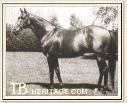 | | My Babu |
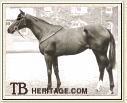 | | Nearula |
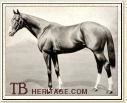 | | Neil Gow - see Chelandry |
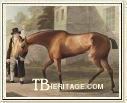 | | Parasol |
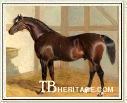 | | Partisan - see Parasol |
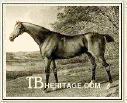 | | Penelope |
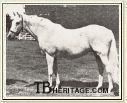 | | Perfume - see My Babu |
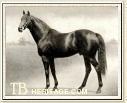 | | Phalaris |
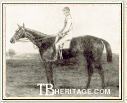 | | Pilgrimage |
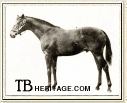 | | Prince Bio |
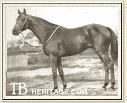 | | Princequillo |
 | | Queen Bertha |
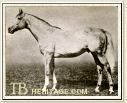 | | Roi Herode |
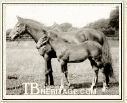 | | Rouge Rose - see Bend Or |
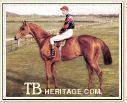 | | Skyscraper - see Chelandry |
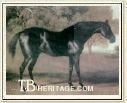 | | Snap |
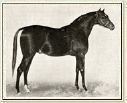 | | Speculum |
.jpg) | | Star Kingdom |
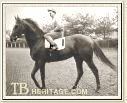 | | Stymie |
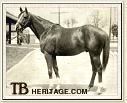 | | Sword Dancer |
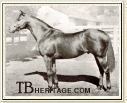 | | Todman |
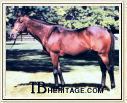 | | Vaguely Noble |
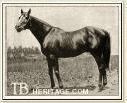 | | Voter |
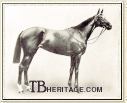 | | Winkipop |
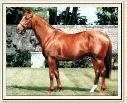 | Woodman
Courtesy Coolmore |
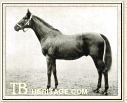 | | Wrack |
|
| Absurd ch. c. 1909 [1-S]
(Sundridge - Absurdity)
A high class juvenile won the Clearwell Stakes and Newmarket's Middle Park Plate and three other races. Sold at age five to G.M. Currie who sent him to his Koatanui stud at Wanganui in New Zealand. Leading sire in New Zealand five times, he got many high-class juveniles, like himself, and several winners of various New Zealand Guineas races. Sons Thespian (ARC Great Northern Guineas) and Lysander (ARC Great Northern Guineas) were later useful sires. His fast daughters infused speed, producing nine Derby/Oaks winners in New Zealand and Australia. His dam Absurdity (1903, by Melton) won two small races, but highly successful broodmare for J.B. Joel at his Childwickbury Stud; also produced dual classic winner Jest (later dam of Derby winner Humorist), St. Leger winner Black Jester, and three other good producing daughters. | |
| Alycidon ch. c. 1945 [1-W]
(Donatello II - Aurora)
Game, honest and sound winner of the "Stayers' Triple Crown" -- Goodwood Cup, Doncaster Cup and Ascot Gold Cup -- at age 4, in addition to a number of other races at age 3, including the 1-3/4 mile Jockey Club Stakes. Leading sire in England in 1955, offspring included champion filly Meld, Doncaster St. Leger winner Alcide (got two-time Australian leading sire Oncidium), Oaks winner Homeward Bound, and staying winners of the Ascot Gold Cup, Gooodwood Cup, Doncaster Cup and other distance races. Son Alcimedes was twice leading sire in Australia, and other sons were useful stallions. His daughters, infusing bottom in many of their foals, were the dams of English champion colt Charlottown, English champion juvenile filly Never Too Late, champion juvenile colt Petingo (later a leading sire), Deutsches Derby winner Elviro, Oaks winner Lupe (Branch 1-K), and other high class horses. His dam Aurora was a speedy juvenile, placed second in Newmarket's Fulbourne Stakes, Goodwood's Richmond Stakes, and the Cheveley Park Stakes; at age three won a maiden race at Newmarket and ran second in the One Thousand Guineas. She also produced Borealis, good at three (second in Doncaster St. Leger) and winner at four of the Coronation Cup and Great Yorkshire Stakes, later a useful stallion; Newmarket and Great Voltigeur Stakes winner Acropolis and Newmarket Stakes winner Agricola, both later useful stallions, the latter leading sire in Australia in 1967-68; and minor winners Woodlark, Arousal and Aldousa, all later useful broodmares. Her dam Rose Red, a winner of two races, bred three winners. | |
| Bend Or ch. c. 1877 [1-K]
(Doncaster - Rouge Rose)
Winner of the Derby and Champion Stakes, a prominent sire establishing his own branch of the Eclipse sire line. His many important sons and daughters included Two Thousand Guineas winner and leading sire in Hungary, Bona Vista; the greatest 19th century runner Ormonde; leading Argentinian sire Orbit; Ascot Gold Vase winner and sire Martagon; the excellent stayer Radium; and other sons that spread his influence across the globe. Daughters included Woodcote Stakes winner Fairy Gold (dam of Fair Play), Doremi (second dam of Teddy), Oriole (dam of Ogden), Ornament (dam of Star Ruby), and many other good ones. The Bend Or-Macaroni "nick" was highly successful. His dam Rouge Rose, a foundation mare at the Duke of Westminster's Eaton Stud, also bred six fillies that were producers and several sent her branch of Family 1 (1-K) forward to the present. Her dam, Ellen Horne (1844, by Redshank) produced Paradigm, dam of classic winners Lord Lyon and Achievement, and their good siblings, including Paraffin (1870), head of Branch 1-L). | |
| Bold Reasoning dkbr. c. 1968 [1-K]
(Boldenesian - Reason to Earn)
Won 8 out of 12 starts at 3 and 4, including Withers Stakes. Leading sire of 2 year olds in France, he had 10 stakes winners from 61 foals, including U.S. Horse of the Year and Triple Crown champion Seattle Slew and Grand Criterium winner Super Concorde. He died after two seasons at stud. His dam Reason to Earn won twice in sixteen starts, ages 2 through 4; her dam Sailing Home was a tough, sound winner of eight races in 76 starts. | |
| Buckpasser b. c. 1963 [1-S]
(Tom Fool - Busanda)
American Horse of the Year 1966 and Champion Handicap Horse 1967, he won 25 of 31 stakes races, including the American Derby and the Jockey Club Gold Cup, the first U.S. horse to win 1 million dollars before the age of 4. Although unsound, his conformation was considered close to the breed's ideal. Got three Canadian Horse of the Year champions, and two champion fillies. Sire of useful sire sons, including Egg Toss, leading sire in Argentina in 1993 and near the top several other times; four-time leading Argentinian broodmare sire Logical; Buckaroo (sire of U.S. Horse of the Year Spend a Buck and other good winners); Silver Buck, Bucksplasher, Norcliffe and L'Enjoleur, all sires of champions. Leading sire of broodmares four times, his daughters produced champion juvenile Easy Goer (Branch 1-S), dual champion Slew o' Gold; Belmont Stakes winner Coastal; champion European colt El Gran Senor; the good U.S. stallion Miswaki, and numerous others. His dam, the sound and tough Busanda (1947, by War Admiral), won 10 of 65 starts, a great staying mare whose wins included the Alabama Stakes, Aqueduct's Suburban and Manhattan Handicaps, the Saratoga Cup (twice), and other distance races against males. She also produced the stakes winner Bupers and several daughters that bred on. |
| Busher ch. f. 1942 [1-S]
(War Admiral - Baby League)
Won 15 of her 21 races at ages 2 and 3, including the Hollywood Derby, she was voted Horse of the Year in the U.S. in 1945. Her only foal to race, Jet Action, ran to age 6 with 11 stakes wins. Her dam, Baby League (1925, by Bubbling Over) won one race in eleven starts; she was also dam of Mr. Busher (1946) a good juvenile and later useful stallion; and his sister Striking (1947), a good juvenile that won Saratoga's Schuylerville Stakes and two other races in 15 starts, dam of 12 winners, including Dwyer and Withers Stakes winner Hitting Away, and third dam of the high class race filly and good broodmare Numbered Account. | |
| Chelandry b. f. 1894 [1-N]
(Goldfinch - Illuminata)
Extremely influential broodmare whose progeny populate all of Branch 1-N. Sweet-tempered, and courageous, she was champion juvenile of her generation, at three won the One Thousand Guineas, but longer distances proved a challenge to her, still she was second in the Epsom Oaks and stretched out in a game effort to place second in the Doncaster St. Leger. At the famous Mentmore Stud produced six winners from 16 consecutive foals, five of them stakes winners, including: Cheveley Park Stakes winner Skyscraper (Never Say Die(see), Irish Derby winner Waygood, American handicapper Reneged, Epsom Oaks winner Galatea, and many other good ones descend from her); the high-class juveniles Traquair (useful stallion in Australia) and Perdiccas (sold to Russia); Stud Produce Stakes winner Popinjay (dam of Ascot's Royal Hunt Cup winner Cross Bow and Nassau Stakes winner Pompadour, second dam of Oaks winner Saucy Sue, Oaks winner Pogrom, St. Leger winner Book Law, Australian leading sire Magpie); top juvenile and Two Thousand Guineas winner Neil Gow (1907, by Marco, sire of two Oaks winners, Prix du Jockey Club winner Chateau Bouscaut and Two Thousand Guineas and Prix d'Essai des Poulains winner Rodosto). All ten of her daughters established successful tail-female branches (see also Heroic), most of which are still active. | |
| Congreve b. c. 1924 [1-O]
(Copyright - Per Noi)
Despite periodic bouts of unsoundess, a versatile, game winner of 11 races in 18 starts, including the Carlos Pellegrini (4000 meters) and the Gran Premio Municipal Maronas in Uruguay against top Argentinian and Uruguyan horses. Rising on his own merits with foals from second tier mares, his first crop of three-year-olds shot him to second place on the leading sires list in Argentina; after that, leading sire seven times, and later leading broodmare sire five times. Most significant stallion of the mid-twentieth century in Argentina and arguably in South America, with numerous classic winners. Son Embrujo, winner of the Argentinian Triple Crown sent the sire line forward with two leading sire sons. Sons Honolulu and Brick were influential stallions in Chile, and sons Uranio and Mazarino stallions in Uruguay. Dam's sire of the brilliant Yatasto and numerous other champions. His Argentinian-bred dam Per Noi also produced several daughters that bred on. | |
| Court Martial ch. c. 1942 [1-P]
(Fair Trial - Instantaneous)
Handsome colt won the Two Thousand Guineas and Champion Stakes and five other races, none over ten furlongs. Leading sire twice in England prior to export to U.S. Got many fast sprinter-milers like himself, including champion juvenile and miler Major Portion, U.S. champion sprinter Impressive, English champion juvenile fillies Rosalba and Star of India. Got many sire sons, the best Wilkes, three times leading sire in Australia. His daughters also infused speed, producing champion English miler Martial, French champion filly Highest Hopes, Two Thousand Guineas winner Only for Life, and the important stallion Lyphard. His dam Instantaneous was placed three times as a juvenile in good races, and at three won Newmarket's Haverhill Sakes, dead-heated for the Leicestershire Oaks. The next dam, Picture, won two minor races and bred five modest winners. | |
| Dixie b. f. 1859 [1-O]
(Sovereign - St. Mary)
Bred in Kentucky, traded for Arkansas cotton land to Major Barak Thomas for whom she bred 15 foals over 18 years, becoming the foundation broodmare of his Kentucky farm, named Dixiana in her honor. Dam of many winners, including the great "western" runner Herzog, beaten only once and considered the best of his era, but dying untimely toward the end of his three-year-old season. Many of her daughters bred on, most notably War Reel, the record-setting filly Aureola (later dam of Metropolitan Handicap winner Aureolus), and Heresay. War Reel's tail-female descendants included champion filly Friar's Carse (dam of War Relic and War Kilt), Santa Anita Derby winner and sire Rough n' Tumble (1948), Belmont Stakes winners Sword Dancer (see) and Hail to All (1962), and a number of other high-class stakes winners in America and Canada. Her second dam, Vamp (1825) -- a daughter of Wire, the Irish-based dam of many good horses -- was imported by E.H. Boardman of Alabama. | |
| Dollar br. c. 1860 [1-B]
(The Flying Dutchman - Payment)
Good weight-carrying racehorse won eight and placed second five times in 19 starts, won over a mile to 2-1/2 miles in France and England, including the Goodwood Cup, the Prix de l'Imperatrice (Prix Rainbow), and Prix de l'Empereur (Prix Lupin). One of France's most influential stallions and principal conduit of the Byerley Turk sire line, leading sire in 1878 and second or third on the list six times. Got five French classic winners; his son Androcles sent the sire line forward through his classic winning son Gardefeu. Dam's sire of Old Man, the outstanding Argentinian racer later known as the "Stockwell Sudamericano." His English dam Payment won Newmarket's Column Stakes; in France she also produced Florin, a winner of the Poule des Produits (Prix Daru) and Poule d'Essai des Poulains, and Metallique, a producer in Hungary. The next dam, Receipt, was dam of Two Thousand Guineas winner Fitz-Roland (1855, by Orlando) and Ascot Stakes winner Redemption. | |
| Fearnought br. c. 1725 [1]
(Bay Bolton - Mare by Lexington Grey Arabian)
Bred by Sir William Ramsden and sold to the Duke of Bolton, he was reported to be the "best horse of his time," winning matches at Newmarket for substanial stakes and more in bets. Got few horses, but one, also called Fearnought, was a big winner in Ireland. His brother, called only Brother to Fearnought got a mare at the head of Family 25. | |
| Filagree ch. f. 1815 [1-S]
(Soothsayer - Web)
Out of Penelope's (see) daughter Web, and half-sister to Derby winner Middleton and Trampoline (dam of Glencoe, see). She was bred by the Earl of Jersey, who owned her dam, and won her only race, at age three, at Newmarket for him before retiring to his stud in Oxfordshire. Excellent producer whose daughters carried on the Web line, her offspring included Oaks and One Thousand Guineas winner Cobweb, One Thousand Guineas winner Charlotte West (the foal in the image), Two Thousand Guineas winner Riddlesworth, and a filly by Phantom that was third dam of Queen Bertha (Branch 1-W, see). Cobweb bred three classic winners: Bay Middleton (Derby, Two Thousand Guineas, important stallion), Achmet (Two Thousand Guineas), and Clementina (One Thousand Guineas); La Troienne (Branch 1-S, see) descends from Clementina. | |
| Forty Niner ch. c. 1985 [1-N]
(Mr. Prospector - File)
Top juvenile in U.S., was awarded the Eclipse Award for his wins that year; at 3 won Haskell Invitational and Travers Stakes, among others. Sire of Belmont Stakes winner Editor's Note, Travers and Wood Memorial winner Coronado's Quest, miler Distorted Humor (sire of champions Funny Cide and Flower Alley). Sent to Japan in 1995. | |
| Genuine Risk ch. f. 1977 [1-N]
(Exclusive Native - Virtuous)
Beloved race filly of highest class, won 10 of 15 races between 2 and 4, her most popular win the Kentucky Derby (placing second in both the Preakness and Belmont Stakes that year), the first filly since Regret in 1915 to do so. Had her first live foal of two total at the age of 17, the unraced Genuine Reward.
| |
| Glare br. f. 1891 [1-M]
(Ayrshire - Footlight)
Good juvenile winner of four races, including Newmarket's Bedford and Buckenham Stakes and Ascot's Fern Hill Stakes, and placed second three times, in eight starts. High-class broodmare, she produced One Thousand Guineas winner Flair (1903, second dam of Night Raid); Lesbia (1905), unbeaten juvenile winner of Kempton's Imperial Produce Stakes, Newmarket's Buckenham Stakes and Middle Park Plate, York's Prince of Wales's Plate and Doncaster's Champagne Stakes, and at three took both the big sprint race, Newmarket's July Cup, and Ascot's Coronation Stakes and later dam of four winners; Vivid (1906), winner of the Imperial Produce Stakes; and Lady Lightfoot (1900), winner of six minor races on the flat and over fences, and later dam of Epsom Derby winner Prince Palatine and other good winners (Kenmare (see) traces to Lady Lightfoot). Her unraced dam Footlight was a half-sister to Illuminata (see Ladas, Chelandry).
| |
| Glencoe ch. c. 1831 [1-T]
(Sultan - Trampoline)
A horse of great speed and excellent staying power, his wins included the Two Thousand Guineas, the Ascot Gold Cup and Goodwood Cup in England, where he spent a season at stud before export to America. One of the most influential stallions in U.S. (and English) history, he was leading sire eight times and unmatched broodmare sire, among his progeny the extremely significant broodmare Pocahontas (in England); the undefeated Reel, later dam of ten high-class winners; Novice (dam of the great racehorse and stallion Norfolk); Magnolia (dam of the top Lexington sons Daniel Bonne and Kentucky); and numerous other excellent producers. Other offspring included the great racemare Peytona, the high class Pryor, and Vandal, who sent Glencoe's sire line forward, leading to the great Hanover. His dam Trampoline ran second in the One Thousand Guineas and also produced a sister to Glencoe, Glencairne (1838), that established a successful family line. |
| Hannibal ch. c. 1891 [1-T]
(Trachenberg - Zama)
Bred by Ulrich von Oertzen, a long-time representative of the Northern German Breeding Society, he won 8 of his 12 races over three seasons, fast enough to win the six furlong Oberhof-Rennen, and sturdy enough to win the1-1/4 mile Grosser Hansa-Preis (by 5 lengths) and the 1-3/4 mile Deutsches St. Leger. Briefly at stud for von Oertzen, then Baron von Muchhausen, and from 1899 on at the state stud at Graditz, he was leading sire in Germany in 1906 and 1912, and second four times. He got six classic winners, including four Deutsches Derby winners, and many good juveniles, as well as some top class jumpers. Son Felswas the champion horse in Germany for three successive years, and was later a useful stallion; most of his other sons, winners or otherwise, were used as improvement sires for half-breds at the various state studs. Daughter Fabula, whose wins included the Austria Preis, was a high-class broodmare whose family is still active, and a number of other Hannibal daughters were good producers. His dam, Zama, a juvenile winner of Newmarket's Houghton Stakes, was purchased by von Oertzen at Newmarket in 1889; the next dam, Sonsie Queen won the Ascot Biennial at age three.
| |
| Hawaii b.c. 1964 [1-L]
(Utrillo - Ethane)
Champion juvenile and three-year-old in South Africa, considered a sprinter-miler prior to export to U.S. where he showed he could run at 12 furlongs, winning the Montauk Club Purse and the U.N. Handicap among other stakes races and became champion U.S. turf horse. Sire of 35 stakes winners from 486 foals, including Epsom Derby winner Henbit, English champion older male Hawaiian Sound and American Handicap winner Hunza Dancer, and many speedy stakes winners in the U.S. His dam Ethane won in South Africa, and later bred twelve winners there, including William Penn (1961), who took the Cape Merchant's Cup and the Durban Merhcant's Handicap among other races. The next dam Ethyl (1936) won thirteen races in South Africa and produced nine winners; her dam Armond, was imported.
| |
| Heroic ch. c. 1921 [1-N]
(Valais - Chersonese)
Sound, tough, game and handsome chestnut horse won 21 races and placed second eleven times in 52 starts. A brilliant juvenile winner of most of the big Australian events, at age three he won three races, including the AJC Derby (beating Spearfelt and others), and at four took 4 events, including the Caulfield Stakes, the VRC Newmarket Handicap (carrying hightest weight) and the AJC Cumberland Stakes (beating Melbourne Cup winner Windbag). The next season won six in a row, including Caulfield's Memsie Stakes (beating Manfred) and the W.S. Cox Plate (beating Limerick), and later in the season the 2 mile King's Plate. Retired to H.S. Thompson's Tarwyn Park stud at Rylstone, NSW, where he rapidly rose in the sire ranks, and by his fifth season he was leading sire in Australia, a position he retained for seven successive years. Sire of numerous Australian classic winners, and some in New Zealand, with a number of successful sire sons, including the almost unbeatable Ajax (1930), later a good stallion in Australia eventually sold to the U.S., and the high-class Hall Mark. His unplaced English-bred dam Chersonese (1915, by Cylgad, imported to Arrowfield Stud in 1917), dam of six high class winners in Australia, was a daughter of Chelandry (see); two of her daughters had Melbourne Cup winning descendants. Heroic was in-bred to her dam Illuminata (Branch 1-L) 4 x 3. |
| High Time ch. c. 1916 [1-H]
(Ultimus - Noonday)
Highly inbred to that American source of speed, Domino, he was a horse with blazing fractions over very short distances, winning one race -- the Hudson Stakes -- in seven starts, a bleeder with other breathing problems. Leading sire in the U.S. in 1928, considered a source of precocious speed, and his daughters proved it, making him champion broodmare sire twice, and second or third on the list several other times. Over half his 289 foals won races as juveniles; offspring include the great champion gelding Sarazan, winner of the last International Stakes against the French Epinard over 1-1/4 miles. Also got champion juvenile High Strung, the speedster Happy Time, and many other speedsters; several of his sons were stallions that got stakes winners, but none to carry on the line. His dam Noonday also bred Junior Champion Stakes winner Suffragette and Toboggan Stakes winner High Noon; she was half-sister to Nightfall, the dam of champion juvenile Campfire.
| |
| Jouvence b. f. 1850 [1-O]
(Sting - Currency)
Outstanding race filly out of the imported St. Patrick mare, Currency, won the Prix de Diane, and also took the Prix du Jockey Club, beating the colts, at age three. In England she won the Goodwood Cup. Her half-brother, Saint Germain (1847, by Attila), won the Poule d'Esssai des Poulains, Prix du Jockey Club, and other races in France. Her second dam, Oxygen (1828) took the Epsom Oaks, and her third dam, Whizgig (1819) the One Thousand Guineas. She did not produce an enduring female line.
| |
| Kenmare gr. c. 1975 [1-M]
(Kalamoun - Belle of Ireland)
Horse with a calm demeanor, beautiful head, bad forelegs and dipped back. Bred at the famed Rothschild Haras Meautry in France, he could not go beyond a mile, a speedy juvenile winner of 3 races, and winner of 3 races at age three, including the Prix Jaques le Marois. Continued the Grey Sovereign sire line, three times leading sire of juveniles in France and twice leading sire, he was purchased by Arrowfield Stud and sent to Australia in 1987, thereafter spent two years shuttling to Ireland, the first to do the "reverse" shuttle. Son Highest Honor (Prix d'Ispahan and three other races) was twice leading sire in France; son Kendor, a champion juvenile in France, was also among the leading sires there, noted for his juvenile winners; got several other useful sire sons in France and Australia. Undeniable source of speed, his daughters produced U.S. champion sprinter Lit de Justice, Deutches Derby winner All My Dreams, and fast winners in Australia, South Africa, the U.S. His dam Belle of Ireland won Doncaster's Fitzwilliam Stakes and one other race, and produced other winners.
| |
| La Troienne b. f. 1926 [1-S]
(Teddy - Helene de Troie)
Placed twice in seven races at 2 and 3 in France and England for her breeder Marcel Boussac, she was purchased by American Col. E.R. Bradley and sent to his Idle Hour Stock Farm, where she became a top producing broodmare whose daughters continued her family to the present, with over 800 stakes winners on all continents descending from her. The more immediately successful foals of her ten winners (from 14 foals) included U.S. champion three-year-old filly Black Helen; and stakes winner Biologist, the unbeaten juvenile and dual American classic winner Bimelech, and Bee Ann Mac. Other winners included Big Hurry (Selima Stakes, dam of champion Bridal Flower and the good handicapper Searching, later a significant broodmare, and other important broodmare daughters); Baby League (dam of four stakes winners, see Busher); Big Event (dam of top gelding Hall of Fame); Businesslike (dam of Busanda (see Buckpasser)); Besieged (dam of Hook Money); Belle Histoire; Belle of Troy (dam of the good handicapper Cohoes, later a successful stallion). Her dam Helene de Troie won a juvenile flat race and three minor races over fences at age three, also produced Leonidas, a winner in France and England. Her second dam, the unplaced Doxa, was full sister to Absurdity (see Absurd).
| |
| Ladas b/br. c. 1891 [1-L]
(Hampton - Illuminata)
Unbeaten juvenile winner of four races at age two, at three won the Epsom Derby and Two Thousand Guineas. Got classic winners Gorgos and Troutbeck, but none of his sons could carry on the sire line. Daughters included the speedy juvenile Montem and Epsom's Acorn Stakes winner Baroness La Fleche, dam of One Thousand Guineas winner Cinna, the latter dam of Beau Pere, a leading sire on three continents. His dam Illuminata also produced Chelandry (see) and Gas (1892, by Ayrshire), the dam of Epsom Derby winner Cicero.
| |
| Martian b. c. 1901 [1-I]
(Martagon - Otterden)
His unraced dam was purchased in England by New Zealander George G. Stead and sent to his Canterbury stud, where she foaled out the "miserable little runt" Martian. Bred to English time, he was half a year behind his generation, but managed the CJC Challenge Stakes and WRC North Island Challenge Stakes at age three; at age four won the 3 mile Randwick Plate and the 2-1/4 mile Canterbury Cup. Sold to J.F. Buchanan, retired to his Kinloch stud where he was leading sire in New Zealand seven times. Superior sire of stayers, "almost had a mortgage on the New Zealand Cup," also got 15 classic winners in New Zealand, and one in Australia. Sire of: champion Warstep (1910), a racing idol, and two classic-winning siblings; the crowd-pleasing gelding Sasanof, winner of most major races in New Zealand and the Melbourne Cup in Australia; the brilliant champion sprinter-miler The Hawk; the champions Rapine and Star Stranger, both gelded stayers, and many other high-class horses. Many of his daughters bred on. His dam also produced the winner Sun God and his brother, ARC Great Northern Derby winner Boniform, later a good stallion, and several daughters that bred on. The next dam, Spring Morn, was a high-class juvenile out of the important broodmare Sunray.
| |
| Meddler b. c. 1890 [1-W]
(St. Gatien - Busybody)
Unbeaten at 2, and unable to enter the English classics due to the death of his owner, he was sold to America in 1893, where he became Leading Sire in 1904 and 1906. His fillies were better than his colts, both on the turf and in the breeding shed. They included Tanya, a brilliant juvenile and the first filly to win the Belmont Stakes at age three; Matron Stakes winner Armenia (dam of Derby winner Durbar); Ladies Handicap and Mermaid Stakes winner Perverse (second dam of Transmute and Traffic); Mediant, a juvenile winner in the U.S. and of Goodwood's Stewards' Cup in England; Mineola, dam of the champion Johren; and many others. His dam was the dual classic winner Busybody, out of dual classic winner Spinaway, and half-sister to Wheel of Fortune, another winner of both the One Thousand Guineas and Epsom Oaks.
| |
| Melbourne br. c. 1834 [1-A]
(Humphrey Clinker - Mare by Cervantes)
Won or placed in races at ages 3-5 over distances of 2 and 3 miles against top company. A successful and influential sire who made it on his owner merits when first bred to low class mares, and who passed on good legs, big head and lop ears. He got West Australian, England's first Triple Crown winner, whose son, Australian continued the Godolphin Arabian sire line in the U.S. The line continued in England through Melbourne's son Solon, sire of the undefeated Barcaldine. Twice leading sire, he also got significant broodmare daughters, among them Guineas winner Canezou, dam of classic winner Fazzoletto and daughters that bred on; Derby and Oaks winner Blink Bonny, later dam of English Triple Crown winner and leading sire Blair Athol. Also had a significant influence on steeplechase breeding through both daughters and sons and he himself got the half-bred Grand National Steeplechase winner Emigrant. His dam was purchased for £10; she also produced Minx, dam of Royal Hunt Cup winner Sir Charles and Ebor Handicap winner The Grand Inquisitor, and several daughters that bred on.
| |
| Minting b. c. 1883 [1-R]
(Lord Lyon - Mint Sauce)
Born in the same year as Ormonde, and overshadowed by him, he nonetheless won 9 of 12 races from 2 to 5. An unbeaten juvenile, including Doncaster's Champagne Stakes, at three took the Grand Prix de Paris, and at 5 Ascot's Jubilee Cup, among others. Disappointing stallion, given his opportunities, still had influence, mostly for speed. Son Minor Forfeit went to South Africa where he was a leading sire. Daughter One I Love, a speedy champion juvenile in the U.S., was a broodmare in America and France -- many high-class juveniles in the U.S. descended from her -- selling plater Rose Tree also went to the U.S. where she produced the popular gelding Roamer; the non-winner Maid of the Mint became the dam of Derby and Grand Prix de Paris winner Spearmint (Branch 1-C), later a significant stallion, and other daughters had long-term influence. His one-race winning dam, Mint Sauce, also produced Doncaster St. Leger winner The Lambkin and One Thousand Guineas winner Minthe.
| |
| Mon Talisman b. c. 1924 [1-H]
(Craig An Eran -Ruthene)
Imported in-utero by Argentinian M.G. Ham, who lived in Paris and owned Haras de Saint Jaques near the city, sold for 570,000 francs as a yearling to another Argentinian Ed. Martinez de Hoz, who had a racing stable in France. Won 6 of 8 races at 3 and 4, including the Prix de l'Arc de Triomphe and the Prix du Jockey Club, one of the top horses of 1927 (the other was Fiterari; they each beat the other twice in high-class races). Successful stallion at Haras d'Auteuil in France, leading sire in 1937. Located near the center of fierce fighting, he disappeared during the German occupation of France at the outset of WWII, for which, unlike many native French owners, Martinez de Hoz was reimbursed. Offspring included the high-class Prix du Jockey Club and Grand Prix de Paris winner Clairvoyant (disappeared with his sire), Grand Prix de Saint Cloud winner Talma. His dam Ruthene won four races, including Doncaster's Fitzwilliam Stakes.
| |
| My Babu b. c. 1945 [1-W]
(Djebel - Perfume)
Champion juvenile in England won 5 out of 6 starts; at 3 won the Two Thousand Guineas, and at 4 took Hurst Park's Victoria Cup under top weight; never won over 8 furlongs. A rare Herod-line sire, but considered a half-bred in England because of the "stain" on his grandsire, Tourbillon's, pedigree, his classic win helped revoke the restrictions of the Jersey Act of 1913. At stud in England until 1956, when sent to the U.S. to stand at Spendthrift Farm in Kentucky, he was among the leading sires in both England and the U.S., and twice leading sire of juveniles in the U.S. Got many precocious juveniles, English Two Thousand Guineas winner Our Babu, the good middle-distance winner Crozier. Son Better Boy, a winner in Australia, was four times champion sire in that country; other sons that were among the leading sires in various countries were Crozier, Milesian, and Primera. Strong broodmare sire high on the lists in the U.S. and England several times, his daughters produced U.S. Horse of the Year Damascus, dual-champion filly/mare Gamely, U.S. champion colt Little Current, and other good horses. His unraced dam Perfume produced eight winners in England and France, including Cambridgeshire Stakes winner Sayani (1943, also winner of several good stakes in France), and several daughters that bred on, including the one race winner Virelle, second dam of Irish Derby winner and sire English Prince.
| |
| Parasol b. f. 1800 [1-E]
(Pot-8-Os - Prunella)
Half-sister to Penelope (see), a winner of 31 races over six seasons, including Newmarket's Oatlands Stakes and the Jockey Club Plate, for her owner-breeder, the Duke of Grafton. Like her dam and her half-sister, superior broodmare, dam of Two Thousand Guineas winner Pindarrie and Oaks and Two Thousand Guineas winner Pastille, and three other good runners, most notably the important stallion Partisan, the sire of four classic winners and of three important sire sons -- Gladiator, Glaucus, and Venison -- that sent the Byerley Turk sire line forward.
| |
| Penelope b. f. 1798 [1-O]
(Trumpator - Prunella)
One of the most significant mares in the stud book [Branch 1-O), bred and raced by the 3rd Duke of Grafton, and later a broodmare at his Euston Hall stud in Suffolk. Successful on the turf in five seasons, won 18 races in approximately 27 starts, many times placed second, her wins included two King's Plates, Newmarket's Oatlands Stakes (twice), Newmarket's Jockey Club Plate, and a number of matches, beating some of the best horses of her day. Dam of two of the most important stallions in the stud book: Derby winners Whalebone and his brother Whisker; also dam of Woful, another good stallion, and of a bevy of daughters that sent her line forward, comprising a good chunk of Family 1: Web, Willful, Wire, Whizgig (One Thousand Guineas winner), and Waltz. Her dam, Prunella (1788, by Highflyer, taproot of Branch 1-E), was as significant, also dam of Derby winner nine-times leading sire in Ireland Waxy Pope, Oaks winner Pelisse, and many daughters, including Parasol (see) that sent other branches of Family 1 forward.
| |
| Phalaris b. c. 1913 [1-I]
(Polymelus - Bromus)
A sprinter with middle distance capacity, he won 16 of 24 races between the ages of 2 and 5, including the St. George Stakes, Chesterfield Stakes, Challenge Stakes, Abdingdon Plate, July Stakes. Leading sire in England in the 1920s 3 times -- the first time after just four years at stud -- and leading sire of broodmares three times between 1937 and 1942, with incalculable influence extending to the present. He accounts for a large percent of all current male thoroughbred lines through sons Pharos, Fairway, Pharamond II and Sickle. His dam Bromus won one race, the Seaton Delaval Stakes; she also produced stakes winner Hainault. Her dam Cheery placed twice in top class company as a juvenile, could not place at age three, and bred just one winner, Bromus.
| |
| Pilgrimage ch. f. 1875 [1-G]
(The Earl or The Palmer - Lady Audley)
One of the top juveniles of her generation, won four races, including the Dewhurst Stakes; at three, won the Two Thousand Guineas, beating the colts, and the One Thousand Guineas, but broke down in the running of the Oaks. Extremely influential broodmare and immediately successful, the dam of stakes winner and sire Loved One (sire of Gondolette and Doris); stakes winners Lourdes, Mecca, and Shrine (later dam of Prix du Jockey Club winner Saxon). Also produced Pilgrim's Progress, a leading sire in Australia, and Epsom Derby winner Jeddah. If this wasn't enough, she was also dam of Epsom Oaks winner Canterbury Pilgrim, dam of two high-class stallions: Chaucer (winner of eight races, and among the leading sires several times in England, dam's sire of the great Hyperion), and the stayer Swynford ( leading sire in England three times). Her dam Lady Audley also bred Middle Park Stakes winner St. Louis, later a useful stallion.
| |
| Prince Bio b. c. 1941 [1-D]
(Prince Rose - Biologie)
Won 6 of his 11 races in France, including the Poule d'Essai des Poulains, his career terminated by a leg injury. Leading sire in France in 1951, with two sons in their turn also leading sires -- Sicambre, champion three--year-old in France; Prince Taj (twice leading sire). Son Sedan, the champion three-year-old colt in Italy was later a leading sire there. Twice leading broodmare sire in France, his daughters produced French classic winner Kalamoun, Snob, Buckaroo, all useful stallions.
| |
| Princequillo b. c. 1940 [1-B]
(Prince Rose - Cosquilla)
Worked his way up from claiming ranks, winning 12 of 33 starts in the U.S., including the Jockey Club Gold Cup, the Saratoga Cup (setting track record), the Saratoga Handicap (equalling track record), the Citizens' Handicap. Rose as a sire on his own merits at the Ellerslie Stud in Kentucky, becoming leading sire in the U.S. in 1957 and '58, and leading sire of broodmares in the U.S. eight times, proving a great source of stamina - and soundness - to counterbalance American speed pedigrees. Sons included two Horse of the Year champions, Round Table and Dedicate, champion filly/older mare Misty Morn, and three CCA Oaks winners. Son Round Table was leading sire in the U.S., son Prince John was a leading sire of juveniles and three-times leading broodmare sire in the U.S., and son Hill Prince was a useful sire and notable filly-getter. Daughter Somethingroyal was the dam of Secretariat; other daughters produced English champion Mill Reef, U.S. Horse of the Year Fort Marcy, champions Key to the Mint, Successor and Bold Lad, the stallion Sir Gaylord, and many other fine animals. His dam Cosquilla won seven races in France, including the Prix de Chantilly and Prix Fille de l'Air; her dam, Quick Thought was a winner and dam of seven winners in Great Britain and France.
| |
| Queen Bertha b. f. 1860 [1-W]
(Kingston - Flax)
Founder of her own significant branch (1-W) of this family, she was also a good race filly, winning the Epsom Oaks and the Ascot Triennial, and placing second in both the Ascot Derby and the St. Leger. Dam of dual classic winners Wheel of Fortune and Spinaway (dam of Busybody (see)), Yorkshire Oaks and Great Yorkshire Stakes winner Gertrude (later dam of Two Thousand Guineas winner Charibert), and St. James's Palace Stakes and Prince of Wales's Stakes winner Queen's Messenger, later a stallion. Her dam was unraced.
| |
| Roi Herode gr. c. 1904 [1-K]
(Le Samaritain - Roxelane)
Good, honest French-bred stayer won the Grand Prix de la Ville de Vichy, the Prix de la Table, and several other races, often placing second, as he did in the Doncaster Cup. Credited with re-introducing the Herod line into Great Britain (a fact engraved on his headstone), when he was purchsed by Irish breeder Edward Kennedy, particularly via his good racing and sire son, The Tetrarach. Other good offspring including Irish Derby winner King John, Irish Oaks winners Judea and Cinq a Sept, Irish Two Thousand Guineas winner St. Donagh, and the good juvenile Milesius. His daughters were the dams of the champion filly Alcibiades; U.S. champion American Flag; Irish Derby winner Zionist; Prix du Jockey Club winner Strip the Willow; Prix de Diane winner Dorina, and Irish Guineas winner Kyloe. His French-bred dam Roxelane won the Grand Criterium as a juvenile, and at age three the Poule d'Essai des Pouliches and the Prix de Diane, and was sister to Rodilard, a winner of the Poule d'Essai des Poulains. The next dam was Rose of York, sister to Bend Or (see).
| |
| (Old) Snap blk. c. 1750 [1]
(Snip - Mare by Fox)
Bred by Cuthbert Routh in Yorkshire, in partnership with Lord Portmore; sold to Jenison Shafto, an owner, breeder and trainer at Newmarket with a farm at West Wratting. His wins included a plate at York and two matches against Marske at Newmarket. Four times leading sire, the old saying went "Snap for Speed," well applied when it came to breeding his daughters, that produced seven classic winners and were second dams of many other classic winners. He got the good runners Juniper, (Latham's) Snap, and Goldfinder, among others, and a number of his sons were exported to the U.S. Daughter Promise was the dam of Prunella of this family (see Parasol, Penelope); daughter Papillon was the dam of the famous Sir Peter Teazle, ten times leading sire; daughter Arminda, produced Medley, a significant stallion in America, and an unnamed daughter was the dam of Shark, also an important stallion in America. His half-brother, the Duke of Cumberland's Crab (by (Old Crab, 1744), also bred by Routh, ran over nine seasons for his breeder, for the Earl of Portmore, and finally for William, the Duke of Cumberland, taking numerous fifties, Newmarket's Jockey Club Plate in 1753, and the King's Plate at Winchester in 1750, and several matches against some of the best of his day; covered few mares in the Cumberland stud, but did get Milksop, a winner of 17 races.
| |
| Speculum b. c. 1865 [1-C]
(Vedette - Doralice)
Winner of eight races in seventeen starts as a juvenile, later the Goodwood Cup and Epsom's City and Suburban Handicap, edged into second place in the Ascot Gold Cup. At Moorlands Stud in Yorkshire, he was overshadowed by Knight of the Garter, but from very few mares he got some toppers, which "made his reputation." Among the top five leading sires in England several times, including champion sire in 1878. Got Cesarewitch winner Rosebery (grandsire of Sundridge), Epsom Derby winner Sefton, and Hagioscope (sire of Santoi), good runners and useful stallions, but his influence on the breed came primarily through his daughters, that produced many good winners, mostly stayers, including Roxelane, dam of Roi Herode (see). His dam also produced Nassau Stakes winner Bradamante and Dora, ancestress of Oaks winner Brownhylda and St. Leger winner Firdaussi.
| |
| Star Kingdom ch. c. 1946 [1-G]
(Stardust - Impromptu)
Bred in Ireland, as Star King, in England he won 5 of his 6 starts at 2, including Doncaster's Gimcrack Stakes, and 3 of his 5 races at age three; never won beyond 7 furlongs, a small, 15.1 hands package of speed. Purchased by Australian Stanley Wootton and sent to Baramul Stud in New South Wales, he became leading sire five times, with a significant influence on that country's breeding stock as a sire of precocious juveniles. Progeny include co-champion Australian juvenile Todman (see), who inherited his speed, and his brother, Australian champion three-year-old colt Noholme II; champion juvenile and champion older horse Sky High; champion juveniles Fine and Dandy and Kingster; champion three-year-old filly Citiius, and many other high-class winners. Many of his sons were successful stallions, among the leading sires in Australia, and several were multiple times leading sires of juveniles; his best were Biscay, Todman, Planet Kingdom and Kaoru Star; son Shifnal was a leading sire of juveniles in New Zealand, and Noholme a leading sire of juveniles in the U.S. Leading sire of broodmares in Australia three times, his daughters also ensured his long-term influence in the country. His dam was unraced.
| |
| Stymie ch. c. 1941 [1-H]
(Equestrian - Stop Watch)
A crowd-pleasing stalker noted for his closing dashes, he won at distances from 5 furlongs to 2 miles between the ages of 4 and 8 (did not win at ages 2 and 3), including the Aqueduct Handicap (twice), Manhattan Handicap, Metropolitan Handicap (twice), International Gold Cup; in all, 35 wins in 131 career starts. Closely associated with his long-running arch-rival, Assault. A disappointing sire of 12 stakes winners from 214 foals.
| |
| Sword Dancer ch. c. 1956 [1-O]
(Sunglow - Highland Fling)
American Horse of the Year in 1959, he won 15 of 39 career starts, including the Belmont Stakes, the Jockey Club Gold Cup, the Preakness Stakes, the Suburban Handicap. Modest sire of only 15 stakes winners, still he got the champion three-year-old filly Lady Pitt, and American dual classic winner Damascus, a long-running tough winner of 21 races in 32 starts, among the leading sires in the U.S., whose son, Private Account, was twice leading U.S. sire. His unraced dam Highland Fling was out of a non-winner, Swing Time.
| |
| Todman ch. c. 1954 [1-U]
(Star Kingdom - Oceana)
Small (15.2. hands), game, and fast colt with a big stride, won the first Golden Slipper Stakes by eight lengths, setting a course record, and the VRC Lightning Stakes among his five wins as a juvenile, making him co-champion juvenile in Australia. At age three took the STC Canterbury Guineas (9.5 furlongs, the furthest he ever went), he was raced as a sprinter with 7 furlongs his best distance. Source of precocity and speed, was among the leading sire in Australia six times, and was twice leading sire of juveniles. Got some useful sire sons, including Imposing, who placed on the Australian leading sires list several times and on the broodmare sires lists in Australia and New Zealand. Twice leading broodmare sire in Australia, his daughters were the dams of Australian Horse of the Year Dulcify, Australian Horse of the Year and champion sprinter Maybe Mahal, and many other stakes winners. His unraced dam Oceana also produced Noholme, champion three-year-old in Australia, later a leading sire of juveniles in the U.S.
| |
| Vaguely Noble b. c. 1965 [1-D]
(Vienna - Noble Lassie)
Sold for a record price to France after his winning juvenile year in England, lived up to his promise, becoming European Horse of the Year at age three, his wins included the Prix de l'Arc de Triomphe. Tall, handsome and gentle, his influence through his progeny was world-wide. Leading sire in England in 1973 and 74 and leading broodmare sire 1982; also placed among the top stallions in the U.S. and France several times over. He got 64 stakes winners from 546 foals, including the two-time Horse of the Year in England Dahlia; the outstanding Exceller that won high-class races in France, England, the U.S. and Canada; U.S. champion older horse Lemhi Gold; French champion older mare Estrapade, English champion three-year-old Empery, and no less than five other champions in various countries. Got the unraced Noble Bijou, four times leading sire in New Zealand and five times leading broodmare sire; Chilean leading sire Semenenko, and several other useful sire sons in Ireland, England, Japan and the U.S. Among the leading broodmare sires in France, England and the U.S., his daughters produced many champions in various countries, including some useful stallion sons. His dam Noble Lassie won the Lancashire Oaks; her dam Belle Sauvage, was a winner, and dam of several winners.
| |
| Voter ch. c. 1894 [1-G]
(Friar's Balsam - Mavourneen)
A powerful, brilliant sprinting colt, he won 26 of his 49 races between the ages of 2 to 7, including the Metropolitan Handicap, Toboggan Handicap and Ocean Stakes, including an eight race streak at age six, often carrying the highest weight. Despite low fertility he produced a number of important American horses for James Keene, after 1913 was a stallion for M.J. Sanford, who sent him to France, since racing in the U.S. was largely in blackout, and in 1919 sold to Gironde, where he died a year later. Got his best runners while in Keene's ownership: the top handicapper Ballot (three times second on the leading sires list); U.S. champion juvenile and Kentucky Derby winner Morvich (out of Hymir, Branch 1-O); Toboggan Handicap winner High Noon; Canadian Derby winner The Manager. His daughters included Pankhurst (dam of Upset), Nightfall (dam of juvenile champion Campfire), Curiosity (dam of champion juvenile Novelty, later a multiple time leading sire in Brazil), and Gnat (dam of Sting). His pregnant dam Mavourneen -- winner of the Hopeful and Beaufort Stakes in England -- was imported into the U.S. with Voter at her side; the foal she carried was Maid of Erin, the dam of Celt, a leading sire in the U.S.
| |
| Winkipop b. f. 1907 [1-P]
(William the Third - Conjure)
Sturdy and game filly won twice in four starts as a juvenile. At age three won eight of her thirteen starts, with three seconds: was second in the Newmarket Biennial by a short head, giving 8 pounds to the winner; won the One Thousand Guineas; ran sixth in the Epsom Oaks when she had insufficient time to recover after something crossed her path mid-race; took Ascot's Coronation Stakes giving away 14 pounds to the field; and went on to win Goodwood's Sussex and Nassau Stakes (giving 5 pounds to second place Yellow Slave and beating her by five lengths), the Durham County Produce Plate, the Yorkshire Oaks, the Newmarket Triennial (giving away 21 pounds), the Newmarket Oaks, and Newmarket's Royal Stakes (by 40 lengths!). Bred Princess of Wales's Stakes winner Blink and his half-sister Newmarket Select Stakes winner Plymstock, the dam of ten winners including Pennycomequick (Epsom Oaks) and Sunny Devon (Coronation Stakes). Court Martial (see) and dual American classic winner Pensive descend from Winkipop. Her sister Third Trick (1906), dam of Nassau and Park Hill Stakes winner (and three other races) First Spear and Craven Stakes winner Left Hand, also established a good line of winners that included Oaks winner Ambiguity and St. Leger winner Sodium. Brother Pilliwinkie won the Ascot Derby (King Edward II Stakes), and half-sister Concertina was a Nassau Stakes winner. Their dam Conjure won a juvenile selling plate and was purchased for hunter breeding, but plans changed when Third Trick won two good races at age two.
| |
| Woodman ch. c. 1983 [1-S]
(Mr. Prospector - Playmate)
Champion 2 year old in Ireland, was a sire of speedy high-class winners. Among the leading sires in Great Britain, and leading sire of juveniles in both the U.S. and France. His winners include champion U.S. three-year-old colt Hansel; Hector Protector, champion European juvenile and stallion in England, Japan and Australia; European champion three-year-old Bosra Sham; U.S. champion juvenile Timber Country; Japanese champion sprinter/miler Hishi Akebone; Irish champion three-year-old Dr. Johnson; champion Irish juvenile Way of Light, and many others.
| |
| Wrack b. c. 1909 [1-N]
(Robert Le Diable - Samphire)
Bred in England by Lord Rosebery, he won on the flat and over fences between the ages of 2 and 6; purchased by Arthur Hancock and sent to his Claiborne Stud in Kentucky, he was among the leading sires in the U.S. four times in the 1920s. Sired 30 stakes winners, his offspring included Gazelle Handicap winner Flambino (dam of Ascot Gold Cup winner Flares, later sire of Chop Chop; the stakes winner Fleam; and U.S. Triple Crown winner Omaha); Travers Stakes, Metropolitan and Suburban Handicap winner Petee-Wrack; the tough, long-running Griselda (dam of Inscoelda and Timely), and stakes winners Little Chief, Flying Cloud, Knobbie, Single Foot, and many others. His dam Samphire was unplaced; she was a daughter of Chelandry (see).
|
|
|
| |
|
|
|
|
|

